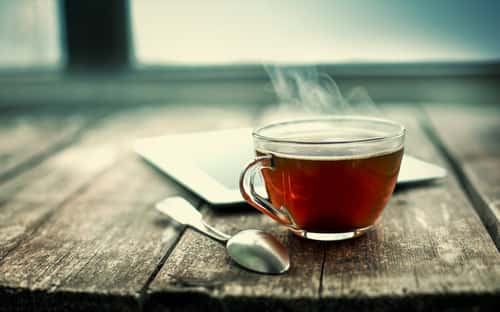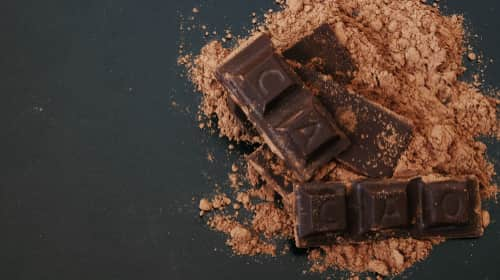Didn’t have that many cups of coffee in the day but still buzzing? Can’t sleep at night? Feeling the jitters?
We all love a good cup of coffee to start the day (well, at least for most of us). Coffee contains caffeine, the most commonly used drug in the world. You might think, drug?!
Caffeine is a drug as it stimulates the central nervous system. To understand how caffeine works to keep us awake, we must first appreciate sleep. Sleep is regulated by many pathways, a main one being via adenosine.

Adenosine is a molecule present in our bodies. When bound to adenosine receptors on nerve cells, it depresses the central nervous system, slows down nerve cell activity and causes us to feel sleepy.

A molecule of caffeine looks very similar to a molecule of adenosine. Hence, being similar in shape, caffeine can bind to these adenosine receptors on nerve cells. This has two effects.
- There is no space for adenosine to bind as caffeine has taken its place.
- Caffeine works differently from adenosine, despite looking similar (stimulating the central nervous system instead of depressing it) – it causes nerve cells to speed up, and tells the brain to increase neuron firing and release adrenaline.
The effects of caffeine manifest as:
- Increased concentration and energy (read also: insomnia)
- Increased blood pressure
- Increased heart rate
- Tenser muscles and restlessness
- Increased feelings of happiness! – the dopamine ("feel good" neurotransmitter) system works more efficiently when adenosine is blocked by caffeine. If you don't believe us, check this research out!
For some, this is what they want out of their cup of joe, but for others who have an increased sensitivity to caffeine, these effects on their body are uncomfortable. Studies have shown a genetic basis in determining whether or not coffee keeps you awake.
If you have a specific variation of a gene in your DNA, your body may process caffeine slower and caffeine hence stays in your body for longer. These (lucky) folk may need less coffee for the same stimulant effect! Geeks can read more here!
So yes, back to the main point about hidden caffeine. If you find yourself feeling oddly perked up without having drunk that much coffee, it could well be due to the caffeine you unwittingly consumed throughout the day.
1. Tea

Tea leaves actually have more caffeine content than coffee beans! But because we usually prepare tea to be more diluted than coffee, your cup of tea will contain less caffeine.
Black teas contain the most caffeine, followed by green tea and oolong types. If you (like me) are the sort to steep your teabag till you can’t quite see it through the dark liquid in your mug, that’s a strong brew and might contain almost half the amount of caffeine in a cup of black filter coffee.
2. Decaf coffee
Decaf coffee might be better labelled as "97% decaf coffee". The dose of caffeine in 5 - 10 cups of decaf can equal the level in a cup of normal caffeinated coffee.
A study by the University of Florida found out that decaf beverages contained varying amounts of caffeine.
The reason why decaf coffee still contains caffeine, albeit in much smaller amounts is probably because of the way it's made. Coffee is by nature, caffeinated. The main idea in the process of decaffeinating coffee is to dissolve and extract caffeine from the raw beans. By the principles of extraction, it’s almost impossible to extract ALL the caffeine, so the remnants go into your decaf coffee!
3. Chocolate

Chocolate is a product of cocoa beans, which contain caffeine. So no surprise there that chocolate will contain some caffeine. Different types of chocolate differ by their caffeine content.
Chocolate is typically made from cocoa butter and cocoa solids. Cocoa butter is mostly fat and doesn't contain caffeine, whereas cocoa solids are where the caffeine is found.
Dark chocolates use a higher percentage of cocoa solids compared to milk or white chocolate, hence contain more caffeine. If you’re looking to cut down on caffeine, consider the less dark options!
4. Energy drinks, protein bars
Energy drinks don’t just rely on their sugar content to get you going, most of them contain caffeine as well! Drinks such as Red Bull®, Vitaminwater®, and even certain coffee-flavoured protein bars (for all you body builders and gym rats) can contain quite high levels of caffeine. A can of Red Bull® easily contains the same amount of caffeine as a regular cup of coffee!
While these are great for giving you that needed boost early in the day, combining them with your usual intake of coffee, tea and chocolates may keep you buzzing for longer than you’d like.
5. Medication

Often overlooked, some over-the-counter medications list caffeine as an ingredient. Certain pain medications such as Panadol Extra® and Cafergot® contain caffeine in combination with analgesics to help with pain relief.
Because of the way caffeine interacts with the adenosine pathway, it reduces the perception of pain when used as a supplement to painkillers. Caffeine also has the effect of causing the blood vessels in your brain to constrict, and this may help alleviate certain vascular headaches.
In cold and flu tablets, caffeine can be present in small amounts. As mentioned, caffeine can work with painkillers to enhance the pain-killing effect. But also, we all know how tired one can be when hit with the common cold – the caffeine present can help you combat fatigue (although it's usually a small amount).
For special populations such as people on a caffeine-restricted diet, young children, caffeine-sensitive folk, people with problems sleeping, or pregnant women, keeping note of where your possible sources of caffeine intake may come from is useful.
An online quiz here can give you a quick gauge on how much caffeine you are getting from your food and drinks.
If you’re really into the nitty gritty of how much caffeine you drink day on day, check out caffeine calculator applications that you can use on your smartphone. For medicinal products, the amount of caffeine in milligrams should be listed on the ingredient list, or you could always check with your pharmacist!
Sarah is a fully registered pharmacist with the Singapore Pharmacy Council. She’s currently working towards completing a further degree in public health. Things that excite her include a good book, a good cup of coffee and being able to help people use medicines safely.
